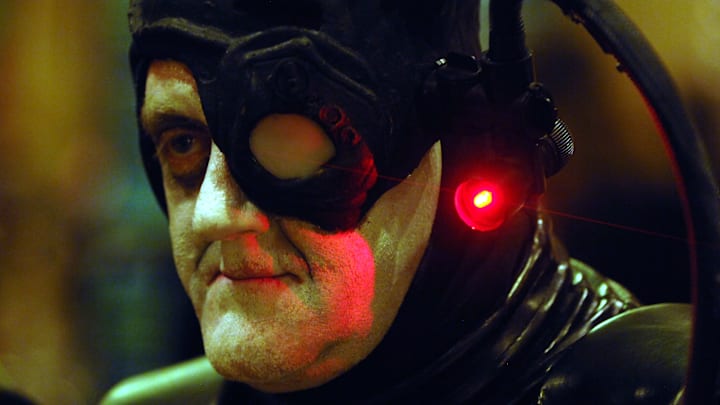Don't forget your tricorder; we're about to scan the creepy, scary parts of the Star Trek universe where horror quietly thrives.
Horror has been lurking in the dark corners of popular culture for a long time, like a ghost. It has brought nightmares to life in abandoned labs, forbidden tombs, and gothic castles. When Star Trek first warped onto our television screens, it offered not only the possibility of braving new worlds but also creative approaches to addressing our fears of what’s in the unknown.
Star Trek redefined the concept of terror by fusing psychological dread with scientific creativity, rather than simply reimagining old horror monsters in a futuristic environment. Through tales of assimilation, body horror, the uncanny valley, and the cosmic unknown, the franchise boldly carved out a new frontier in space terror; one where horror serves as a mirror for human anxieties, ethical quandaries, and the quest to understand the “other.”
Classic horror tropes: monsters, madness, and the unknown
Our common fears are what make classic horror what it represents. Horror stories have used the fears we have about our bodies, minds, and what sets us apart from the unknown. For example, the terrifying change of Dr. Jekyll and Mr. Hyde to the existential dread in Frankenstein’s monster, courtesy of author Mary Shelley. The tropes of monsters stalking helpless victims, psychological breakdowns in the dark, and the loss of control to evil forces have shaped countless films, from creeping menace of the undead in Universal’s Dracula to the haunted isolation of Ridley Scott’s Alien.
How Star Trek reinvents the traditional trope
Monsters and aliens:
Star Trek’s first steps into horror introduced us to the Salt Vampire (“The Man Trap”), a shape-shifting alien that preyed on the vulnerabilities of the USS Enterprise’s crew in The Original Series. Unlike monsters in folklore, the creatures in Trek are often grounded in biological realism, using scientific reasoning to amplify fear. Later series expanded the menagerie: the Gorn, reimagined in the more recent Strange New Worlds, traded camp for carnivorous suspense; Armus from TNG’s “Skin of Evil” embodied pure malevolence with a tar-like presence that killed the beloved character, Lt. Tasha Yar.
Body horror:
Werewolves and zombies dominate the body horror subgenre, but Star Trek makes transformation terrifyingly personal. The Borg, originally introduced in “Q Who” (TNG ), have an assimilation process that forcefully strips away individuality and transforms beings into collective cyborg drones for the cybernetic hive mind. This remains one of television’s most disturbing explorations of losing oneself.
In the Delta Quadrant, the Vidiians, first encountered in the Voyager episode “Phage," harvest bodies for survival, blurring the line between victim and villain. Episodes like “Genesis” (TNG ), where crew members devolve into monstrous lifeforms, and “Threshold” (Voyager ), where a member of the crew transforms into an amphibious creature, magnify the visceral terror of mutation.
Psychological terror:
While haunted houses torment with psychological breakdowns, Trek takes these fears to unexplored dimensions. “Schisms” (TNG ) created a tale of invisible abductors and fearful experiments, and TNG's “Night Terrors” used sleep deprivation and hallucinations to push the crew’s minds to the brink. The franchise’s horror is rarely external; it invades the character’s psyche.
Isolation and paranoia:
Much of horror leverages isolation, the lone survivor, the confined space. “Empok Nor” (DS9 ) taps into this when Deep Space Nine crew members are stranded on an abandoned Cardassian space station, where paranoia breeds violence and survival become a slasher film by another name.
Encountering the unknown: Trek’s unique angle: science, ethics, and hope
Star Trek’s approach to horror is transformative:
- Instead of superstition and the supernatural, Trek uses science and rationality to explain the mysterious.
- Episodes often frame terror as a moral or ethical dilemmas, giving us deeper engagement than the average fright fest.
- The stories move beyond doom and despair; even at their darkest, Trek nurtures the possibility of understanding, survival, and growth. Terror, here, is a path toward empathy, not merely a source of scares.
Case studies: reinvention in action
- “Schisms” (TNG ): Echoes haunted house suspense with eerie abductions and body horror; all rationalized through science.
- The Borg: Reflect classic zombie and body horror stories, with the added twist of technological inevitability and loss of agency.
- “Empok Nor” (DS9 ): Survival horror through a Star Trek lens, with familiar slasher setups driven by psychological breakdown.
- “Genesis” (TNG ): Creature-feature chaos, showing how Trek imagines the fears of mutation and regression.
Why Star Trek’s horror endures
Star Trek's new takes on horror tropes mean that its scariest stories will never go out of style. Each new generation of fans can find something that scares them, whether it's the fear of losing control of technology, confronting our own darkness, or facing the unknown. These episodes and story arcs can spark debate, affect other sci-fi franchises, and keep both old and new Trekkies interested in space terror.
The horror legacy of the franchise's long-running series goes beyond the jump scares. Its monsters and mysteries show how people have always been afraid of things and how they hope to get over them. Trek's most lasting contribution to the horror genre is not just that it changed what scares us; it also taught people that fear can be faced, understood, and even overcome in the name of knowledge and kindness.
What are your favorite horror moments from the Star Trek universe? Be sure to share your thoughts and comments with us on the Redshirts Always Die Facebook and X pages to keep the conversation going across the stars.
